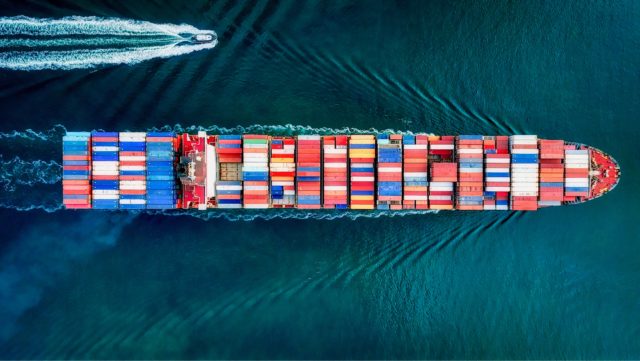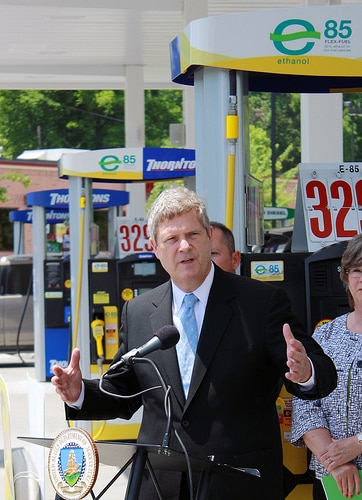
Alternative Fuels for Mass Transportation

Photo by Cameron Venti via Unsplash
Even as politicians debate whether or not the climate of the planet is changing, numerous corporations and research facilities have started to take up the sustainable mantel – and for good reason. When the United States released its Fourth National Climate Assessment, the numbers looked grim.
As such, looking into alternative fuels for mass transportation is more relevant than ever, as small changes in the way planes and ships make their way across the planet will help address the ever-rising amount of carbon dioxide humanity produces.
A Diversity of Alternative Fuels
According to the European Commission, airplanes contribute four percent of greenhouse gas emissions worldwide. Lorenz Bauer, in Biofuels Digest, also notes the conglomerate of major shipping vessels releases 866 million tons of CO2 daily. Corporations that utilize either one or both of these forms of transportation are looking to use either a combination of fuels or entirely new forms of energy to keep their fleets operational while lessening their carbon footprint.
Nowadays there are two main currents (three, when you include solar power) of alternative energy. The first one basing on electricity, the later basing on biofuels.
Maritime transport
As of 2010, the United States Navy was intent on ensuring its ships would operate on a combination of renewable fuel and nuclear power by 2020.
While their research direction may have changed, with the United States’ withdrawal from the Paris Agreement, the Navy still originally made strides towards developing an algae-based fuel they could pair with the fossil fuels they used to operate their ships. Even though production of this new fuel was expensive, a 49 foot gunboat made a test run using the new fuel in combination with fossil fuels to great success. Even if the Navy opts not to continue down this path, then, the algae-fuel remains a viable – if expensive – option for other seafaring vessels.
For a less unusual solution, some other ships have been turning to liquefied natural gas (LNG) to fuel their boats more sustainably. LNG works in much the same way as algae-based fuels, meeting oceanic sulfur regulations without the fuel having to undergo lengthy treatment and producing fewer emissions than its fossil-fuel counterparts.
Corporations like Carnival, the Swedish Stena Line, GoodFuel Marine NRG, Royal Caribbean, and additional, smaller companies were looking to integrate this fuel into their ships as of 2015, reducing the carbon footprint they leave in their wake.
Methanol, too, is a more commonly heard-of fuel that’s set to serve as a replacement to petrol. While this fuel is most commonly created through the use of natural gas or coal, it serves as a renewable resource and subverts some of the sulfuric safety concerns LNG elicits. The Swedish Stena Line, as has already been mentioned, started using methanol to fuel its ferries in 2015 and now looks to pair the use of methanol with LNG in order to operate as sustainably as possible.
We can also hope to see purely electric ships in the near future. Many manufacturers are striving to achieve fully electric vessels by as soon as 2020. One Norwegian company is already making waves internationally with its world’s first autonomous electric container ship: The ‘Yara Birkeland’. At 70 meters long and 14 meters wide, holding around 120 containers, Yara International, plans to utilize this ship to replace up to 40,000 diesel-powered truck journeys a year. The ship should be ready by 2020 and plans are for it to be fully autonomously operated by 2022. This will open endless possibilities for both commercial and cruise liners.
Aircraft
What about electric engines in airplanes, though? While it may be risky to work solely with an electric engine in the middle of the ocean, engineers around the world have been brainstorming ways in which to make an operable electric engine for an airplane for nearly a decade.
The University of Stuttgart released its e-Genius in 2011, debuting it through a 62-mile flight wherein the plane used 25 kW of electricity, costing the university a stunning $3 to operate. Similarly, Solar Impulse 2 debuted in 2016. NASA has reported similar tests of unmanned vehicles, and Norway has been pursuing the creation of electric short-haul airliners, according to Agence France-Presse of The Guardian.
These planes rely on batteries in order to get them off the ground. At this point, no information has been released as to how long the batteries would need to charge if used commercially. Even so, engineers must first discover how to increase the density of these batteries, according to Evan Gaj of Techcrunch, because at the moment, they provide only enough power to lift one or two people off of the ground.
Today, powering aircraft with biofuels seems to be more feasible as it has been proved a good few times already. In 2013 NASA scientists came to the conclusion that a commercial airliner can definitely fly as high as 39,000 feet on a mixture of jet fuel combined with plant oil, without affecting the engine performance.
Virgin Australia is one of the commercial airline companies that have decided to switch to sustainable aviation fuel through Brisbane Airport’s general fuel supply system. Through working with different organizations such as The Queensland Government and US-based biofuel producer Gevo, Inc they created biojet, which has now been used to fuel 195 domestic and international flights departing from Brisbane Airport.
Compared to traditional fossil jet fuel, biojet contributes to lower levels of carbon emissions. It can be derived from many sustainable sources including sugarcane bagasse, molasses, wood waste and agave and is already in use at major airports in Norway and the USA.
Alternative forms of energy for mass transportation are available. The foundation has been laid for these fuels to come into mass use. What matters now is that these resources are utilized in order to slow the pace of climate change and ensure that the planet remains healthy long into the future.
Author bio: Giles Kirkland is an automotive expert, freelance writer and a passionate advocate of clean and sustainable technologies in the motoring world.
Sources:
https://edition.cnn.com/2018/11/26/health/climate-change-report-15-takeaways/index.html
http://europa.eu/rapid/press-release_IP-06-1862_en.htm
http://www.biofuelsdigest.com/bdigest/2016/11/22/ocean-going-vessels-going-green/
https://www.oponeo.co.uk/tyre-article/why-we-need-biofuels-for-a-green-future
https://www.theguardian.com/environment/2010/oct/27/us-navy-biofuel-gunboat
https://worldmaritimenews.com/archives/17695/sweden-stena-buys-three-lng-tankers-from-tmt/
http://news.stenaline.co.uk/pressreleases/stena-line-launches-the-world-s-first-methanol-ferry-1137516
https://www.yara.com/knowledge-grows/game-changer-for-the-environment/
https://www.theatlantic.com/sponsored/thomson-reuters-why-2025-matters/electric-flight/208/
https://techcrunch.com/2018/07/08/the-electric-aircraft-is-taking-off/?guccounter=1
https://www.nasa.gov/langley/ten-engine-electric-plane-completes-successful-flight-test
http://www.bbc.com/future/story/20180814-norways-plan-for-a-fleet-of-electric-planes
https://biofriendlyplanet.com/eco-awareness/air-quality/emissions/jet-engine-biofuel-passes-test-with-flying-colors/


Post a comment